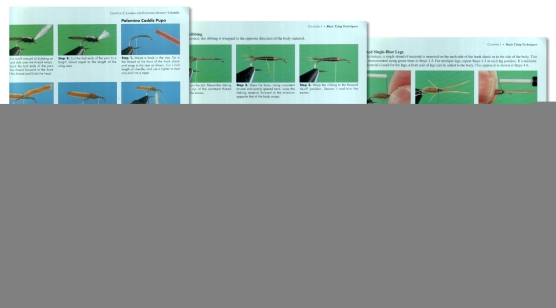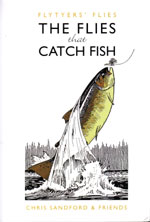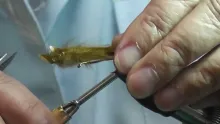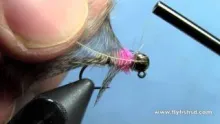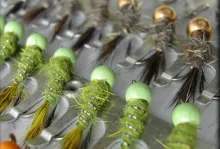The subtitle "Over 1,000 color photos of techniques and pattern styles" lured me into buying this book from 2001. 125 pages at 10 UK£ or about 16 US$ used made it a no-brainer.
Updated or edited 10 months ago
The subtitle "Over 1,000 color photos of techniques and pattern styles" lured me into buying this book from 2001.
125 pages at 10 UK£ or about 16 US$ used made it a no-brainer.
And the subtitle is true enough - of course - because the book has an enormous number of photos, and even though haven't counted, there is probably one thousand or even more.
But one thing is the number. My problem is the quality. Not the technical quality mind you, which is impeccable! The author Jim Shollmeyer is a skillful fly photographer whose photos in books and magazines must be in the hundred thousand range if not more. His colossal and widespread production vouches for the quality.
My problem is that they are boring.
My problem is that they are boring. They show in magnificent and clear detail what they are supposed to: tying steps and techniques. But shot in a completely identical setup with the background color being the only variation. Unfortunately changing from uniform red to uniform green to uniform blue does not get my heart rate up. And the images show the flies identically framed and in the same size and lit the same way. And they are all printed in the exact same size in the book, set in a very rigid layout grid.
Sure I like the clear and instructional style, but after the first 20-30 pages with no variation at all, it's already getting too much, and with 125 pages with no variation in lighting, fly size or angle it is simply too monotonous for my taste. I miss some large, creative pictures of the finished flies, the flies shot waterside, some of the materials or tools, tying environment or whatever could break the rhythm.
The book delivers on the other part of its promise: Techniques and Pattern Styles. That's exactly what it contains. The first 50 pages cover all thinkable fly tying techniques from starting the thread to whip finishing with your fingers as well as a tool.
After that follows about 75 pages of patterns divided into sections each covering a certain style or technique.
Again I'm sorry to say that this doesn't match my taste in fly-tying books. Almost half of the book covers common techniques, teaching the reader how to do things, which are basic and universal to fly-tying.
Tying in tails, dubbing a body, making a hair hackle and much more.
Just a note to all fly-tying book authors: you do NOT need to tell us how to start the thread, whip finish, wrap a hackle or make a dubbed body unless you aim your book at absolute beginners. It's been covered so many times before, and you should rather concentrate of new and/or more advanced things. It's very unlikely that a tyer who buys a book specifically on nymphs cannot start or finish a thread.
You can find more advanced and "nymph specific" tying methods in this book like afterfeather mayfly gills, dubbing and brushing used to create a slimy larva look, La Fontaine's Sparkle Pupa technique and many more, but they hide themselves in a flurry of flies passing by at several per page.
If get a sense of "speed blindness" when reading the book. Like driving so fast in a car on a monotonous road that things blur a bit and you loose the ability to appreciate the details when they appear.
In spite of being an excellent book with a ton of very valuable information on tying nymphs, it simply doesn't strike any cords with me, and will not be one that I will consult very often - neither for patterns nor for techniques.
Beginning nymph tyers will very likely find it very useful, and as a basic nymph fly-tying book it will give you a lot for your money.
- Log in to post comments

